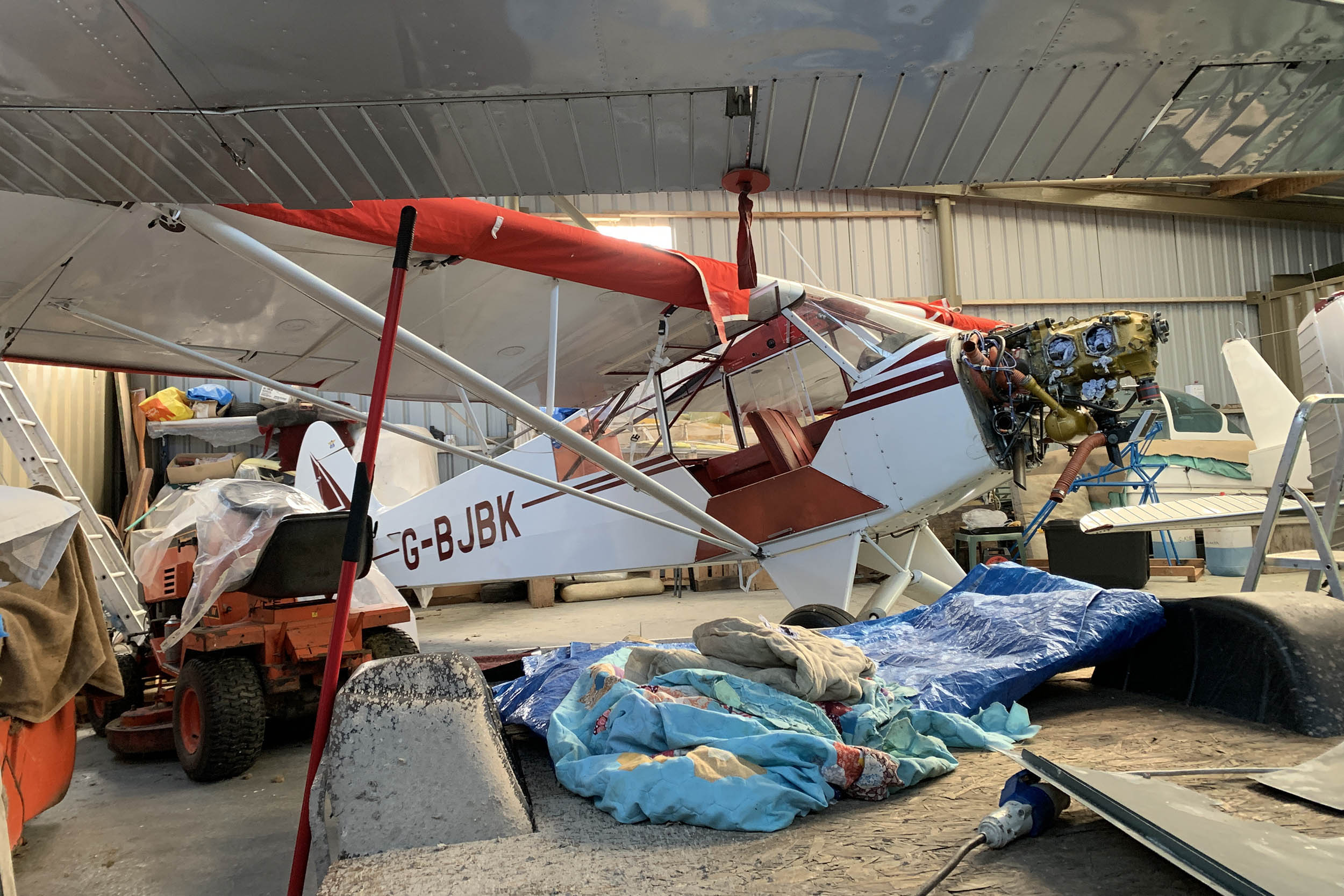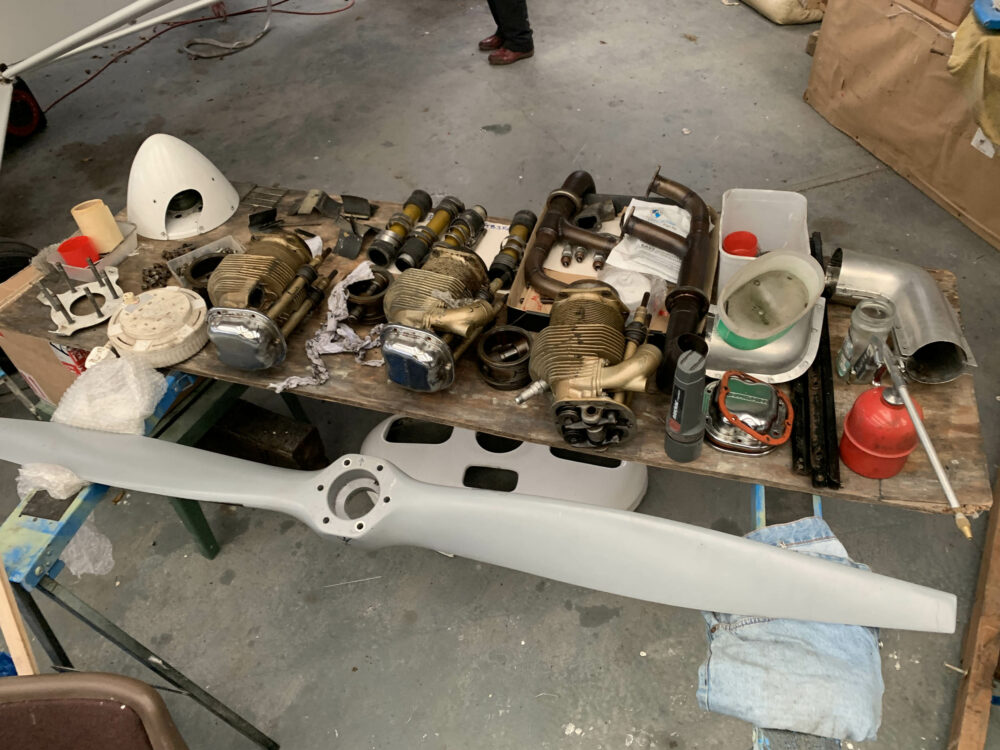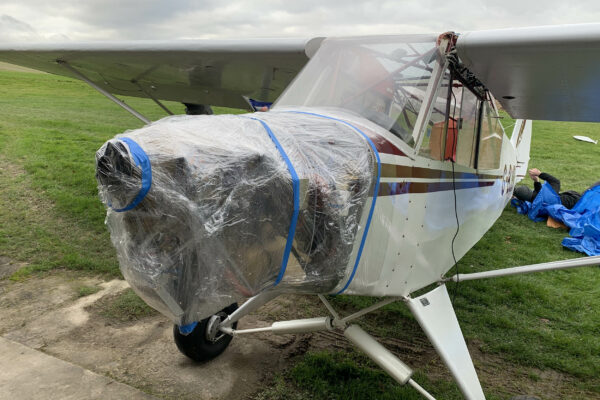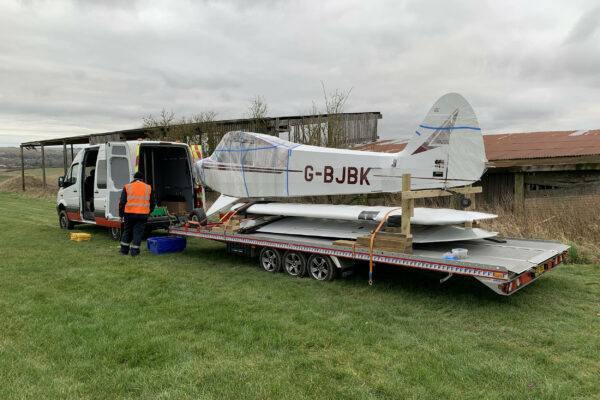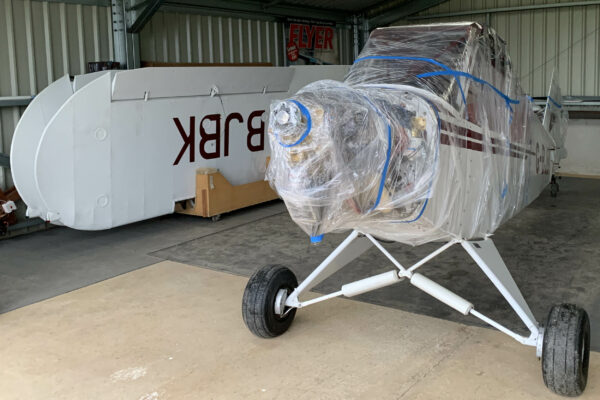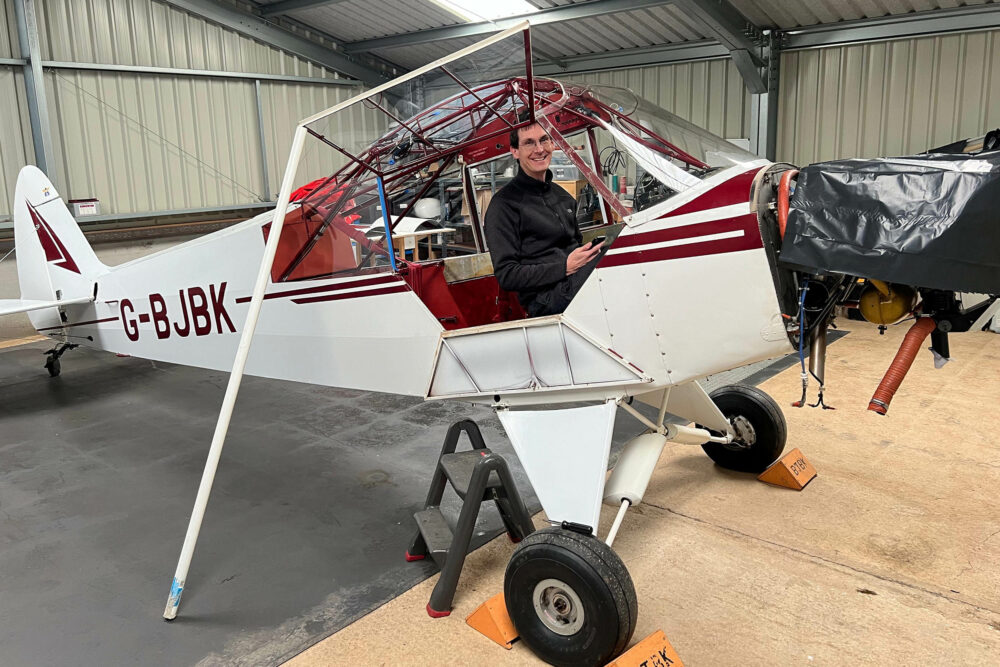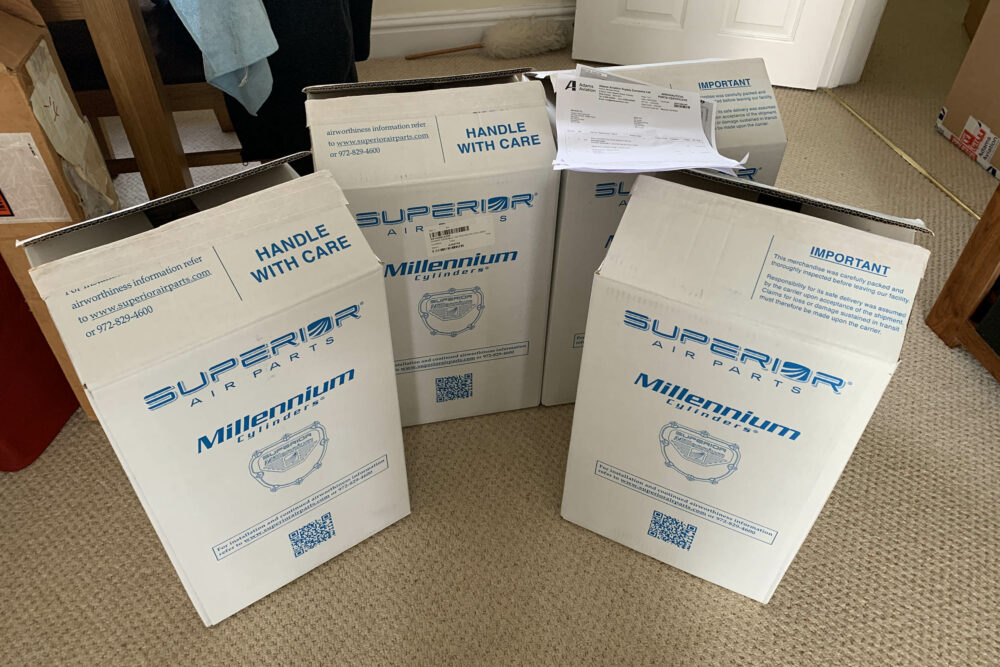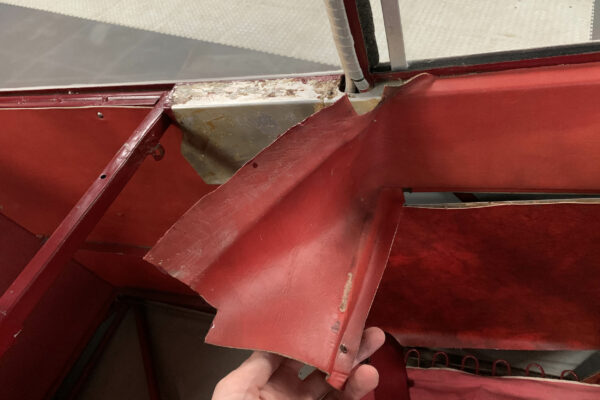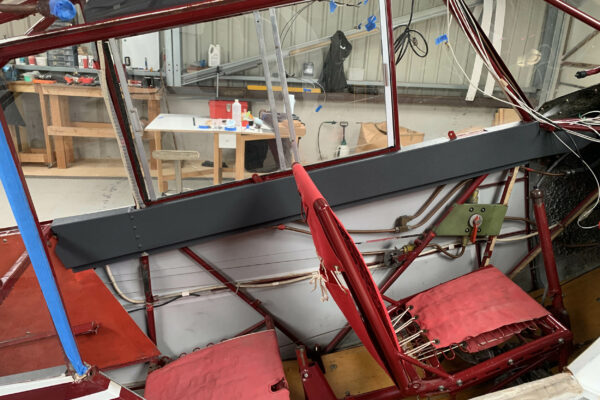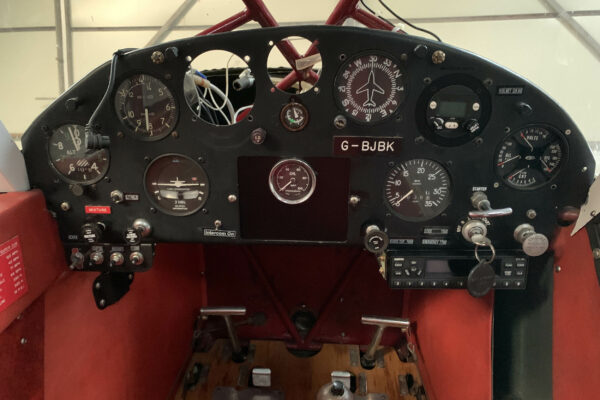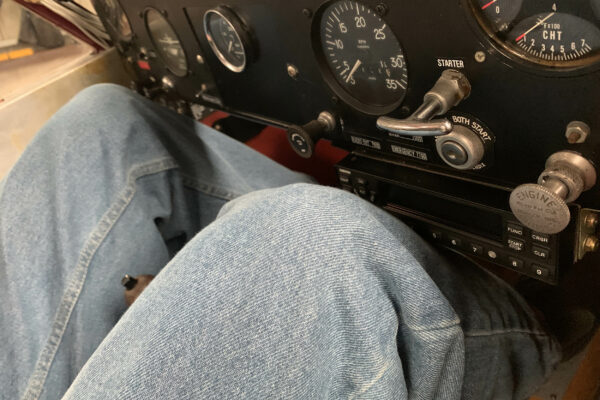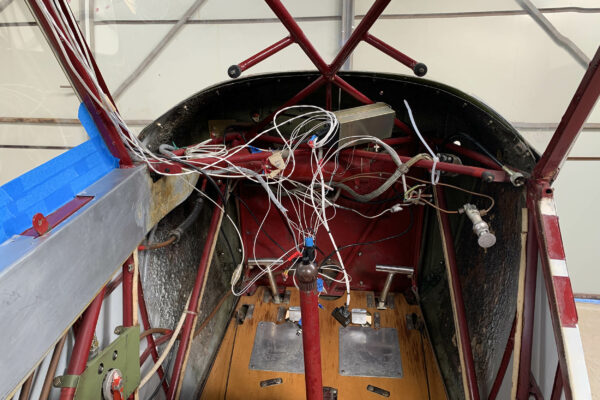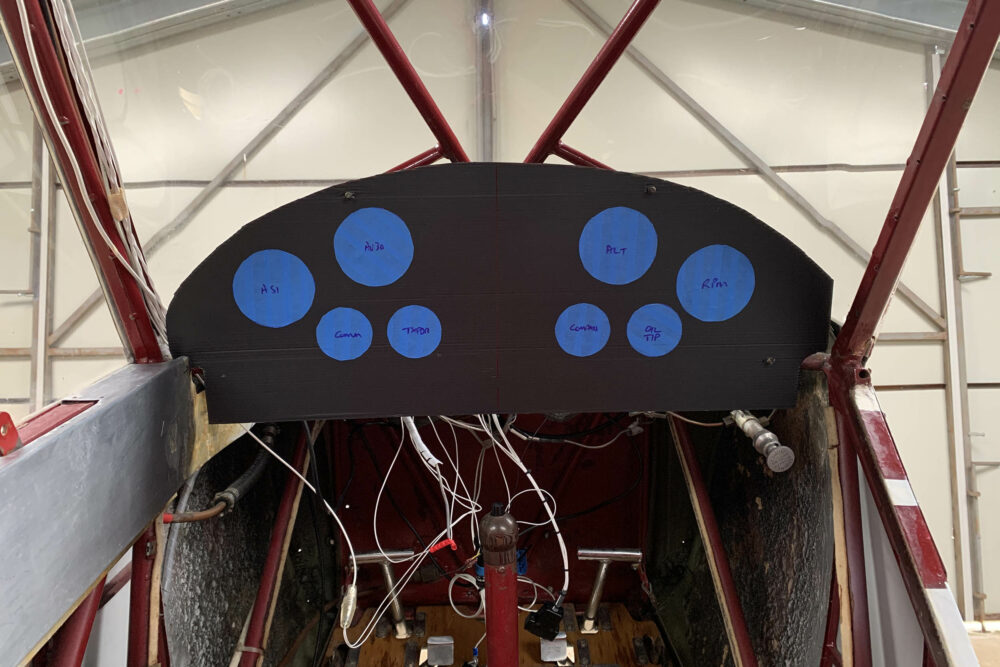Inside, the cockpit was very red, thanks to swathes of vinyl fitted during a 1988 restoration (it was blown on it’s back at Old Sarum in the 1987 storms).
Now, red is an authentic Super Cub cockpit colour, but the vinyl was beginning to show its age, and starting to unpeel in places. Looking at bits where it was loose made me think, “That looks quite thick and heavy.”
Before I knew it, the interior panels were out, and after stripping off the vinyl, I’d created an impressively full and heavy bin bag. More on that in future, as it will be interesting to see just how much weight has been saved.
Pulling the vinyl off left me with panels covered in sticky contact adhesive… the fix for that was a litre-and-a-half of acetone and several days of scrubbing.
To refinish the panels, I found a fire resistant dark grey vinyl film that is smart – and 20 per cent of the weight of the previous covering (and fire resistant).
Video: Going on a diet


